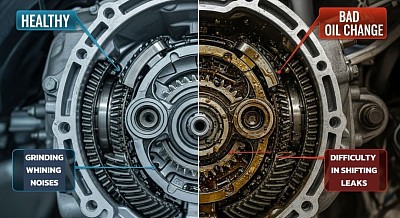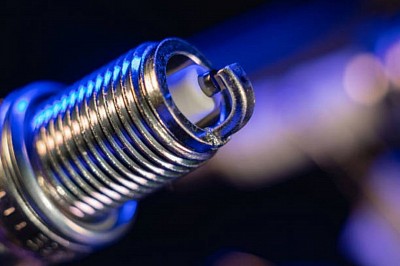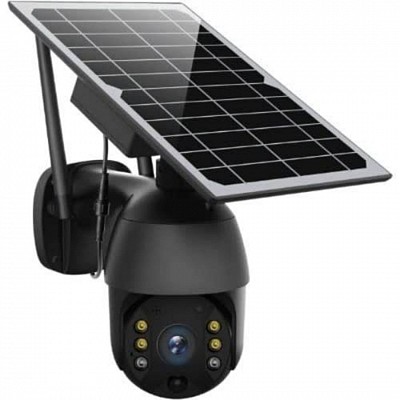Newsletters/ Blog/ Arrivals
Bad Gearbox Oil: 12 signs and symptoms
Gearbox Gazette
Is Your Gearbox Crying Out? 12 Signs of a Bad Oil Change!
Welcome to this month's Gearbox Gazette! Today, we're tackling a crucial, yet often overlooked, aspect of vehicle maintenance: the gearbox oil change. While getting this service done is essential, a bad gearbox oil change can lead to significant problems down the line. Ignoring these issues can result in costly repairs or even a complete gearbox replacement.
So, how can you tell if your recent gearbox oil change wasn't up to par, or if your gearbox is suffering from neglected fluid? Here are 12 warning signs and symptoms to look out for:
1. Difficulty Shifting Gears: This is one of the most common and immediate indicators. If you find your gears grinding, sticking, or refusing to engage smoothly after an oil change, something is definitely amiss. This could be due to incorrect fluid levels, the wrong type of fluid, or contaminants introduced during the change. This often points to incorrect fluid levels (too low or too high), the wrong type of fluid being used, or air in the system. The immediate solution is to have the fluid level checked and adjusted by a professional. If the wrong fluid was used, a complete flush and refill with the correct specification fluid is necessary.
2. Unusual Noises (Whining, Humming, Clunking): A healthy gearbox should operate relatively quietly. If you start hearing new or louder whining, humming, or even clunking sounds, especially when shifting or accelerating, it's a strong sign of internal friction or wear caused by inadequate lubrication. These noises indicate increased friction or internal wear due to inadequate lubrication. The gearbox fluid needs to be inspected for proper level, type, and contamination. If the fluid is okay, the noises could point to worn bearings or gears, requiring a professional inspection and potential component replacement.
3. Leaking Fluid: Check underneath your vehicle for any signs of fluid leaks. A bad oil change can sometimes result in loose drain plugs, damaged seals, or improper sealing, leading to fluid loss. Gearbox fluid is typically reddish-brown or amber. Leaks are usually caused by a loose drain plug, a damaged or improperly seated pan gasket, or compromised seals. A mechanic needs to identify the source of the leak and replace or tighten the faulty component.
4. Burning Smell: A distinct burning smell, often likened to burnt toast, is a serious red flag. This indicates overheating within the gearbox, likely due to insufficient or degraded fluid failing to dissipate heat effectively. A burning smell signifies overheating within the gearbox, typically due to low fluid levels or degraded, oxidized fluid. The immediate solution is to stop driving and have the fluid level and condition checked. If the fluid is low, top it up. If it's old or burnt, a complete fluid flush and refill are required. Also, check for any obstructions to the gearbox cooler if one is present.
5. Delayed Engagement: When you put your vehicle into drive or reverse, does it take longer than usual for the gears to engage? This delay can be a symptom of low fluid levels or contaminated fluid not providing proper hydraulic pressure. This symptom is often linked to low fluid levels or contaminated fluid that prevents proper hydraulic pressure. The solution is to check and correct the fluid level. If the fluid is dirty or old, a flush and refill can often resolve the issue.
6. Gear Slippage: You might feel the engine revving up, but the vehicle isn't accelerating proportionally, or it feels like the gears are "slipping" out of place. This is a dangerous symptom that needs immediate attention, often caused by worn clutches or insufficient fluid pressure. Gear slippage is a serious issue that indicates insufficient fluid pressure or worn internal components like clutch packs. This requires immediate professional attention. A fluid level check is the first step, but often, internal repairs or even a gearbox rebuild/replacement may be necessary.
7. Warning Lights on Your Dashboard: Modern vehicles are equipped with sensors that can detect issues with the transmission. If your "Check Engine" light or a specific transmission warning light illuminates after an oil change, it's a clear signal to investigate. Modern vehicles have sensors that detect transmission issues. The solution is to have a diagnostic scan performed by a professional mechanic. The fault codes will pinpoint the specific problem, which could range from a sensor malfunction to a more serious internal issue with the gearbox.
8. Shuddering or Vibrations: Feeling unusual vibrations or shudders, especially when accelerating or shifting, can point to issues with fluid consistency, internal component wear, or even an imbalanced drive shaft due to neglected lubrication. Shuddering can be caused by inconsistent fluid viscosity, worn torque converter, or even an imbalanced drive shaft. Start by checking the gearbox fluid's condition and level. If the fluid is old or incorrect, a change can help. If the problem persists, a professional diagnosis is needed to check for internal wear or component issues.
9. Overheating Transmission: While you might not always see a specific temperature gauge for the gearbox, some vehicles have warning lights. An extremely hot gearbox casing after a drive can indicate a problem with fluid's ability to cool. Overheating is often due to low or degraded fluid that can't dissipate heat effectively. The solution involves checking and topping up/replacing the fluid. If the problem continues, there might be an issue with the gearbox cooler or internal friction, necessitating a professional inspection.
10. Dark or Murky Gearbox Fluid: If you (or your mechanic) check the dipstick and the gearbox fluid appears dark, murky, or has a strong, unpleasant odor, it's a sign of contamination or degradation, indicating it wasn't properly changed or is breaking down too quickly. This indicates significant contamination, oxidation, or breakdown of the fluid. A complete gearbox fluid flush and refill are essential. It's also wise to check the gearbox pan for excessive metallic debris, which could signal internal wear.
11. Reduced Fuel Economy: While not always the most obvious sign, a struggling gearbox that isn't operating efficiently due to bad fluid can lead to increased drag and, consequently, poorer fuel consumption. While not exclusively a gearbox issue, a struggling or inefficient gearbox can lead to increased engine load and poorer fuel economy. Ensure your gearbox fluid is at the correct level and in good condition. If other, more obvious symptoms are present, addressing them will likely improve fuel economy.
12. General Lack of Performance: Overall, if your vehicle just doesn't feel "right" after a gearbox oil change – perhaps it feels sluggish, lacks power, or the driving experience is simply less smooth – it could be a subtle sign that the gearbox is under stress. This could be a culmination of several subtle issues. Start with a thorough inspection of the gearbox fluid's level and condition. If the fluid is correct, a professional needs to perform a comprehensive diagnostic check to identify any underlying mechanical or electronic issues affecting the gearbox's performance.
What to Do If You Notice These Symptoms:
Don't ignore these warning signs! If you experience any of these symptoms after a gearbox oil change, or even if it's been a while since your last service, it's crucial to:
- Contact your mechanic immediately: Explain the symptoms in detail.
- Avoid driving long distances: Especially if the symptoms are severe, as this can exacerbate the problem and lead to more costly damage.
- Get a professional diagnosis: A qualified mechanic can inspect the fluid, check for leaks, and properly diagnose the issue using specialized tools and knowledge.
Regular and correct gearbox oil changes are vital for the longevity and performance of your vehicle. Don't compromise on quality when it comes to this essential service!
Stay safe on the roads,
The Gearbox Gazette Team
Which Spark plug is the Best?
The Top Contender: Iridium Spark Plugs
Iridium spark plugs are widely considered the best option due to their unmatched durability, efficiency, and longevity. Here are the reasons why they stand out:
- Performance: Iridium's high melting point allows it to perform effectively under extreme conditions, making it ideal for modern engines and high-performance vehicles
- Longevity: They last the longest, often up to 100,000 miles or more, reducing the need for frequent replacements.
- Fuel Efficiency: Better combustion translates to improved fuel economy, saving costs in the long run.
- Precision: They provide reliable ignition, ensuring smoother engine operation and enhanced power.
Other Excellent Options:
- Platinum Spark Plugs: These are also highly durable and long-lasting, though slightly less advanced than iridium. They strike a balance between performance and affordability
- Copper Spark Plugs: While not as durable as iridium or platinum, copper spark plugs excel in older vehicles or engines with lower heat ranges.
Choosing the Right Spark Plug:
To select the best spark plug, consider:
- Engine Type: High-performance or modern engines benefit from iridium or platinum plugs, while older engines may work well with copper or silver plugs.
- Driving Habits: If you drive frequently or under demanding conditions, iridium is your best bet for reliability.
- Budget: Iridium spark plugs are the most expensive but offer superior value for the long term. If affordability is a priority, platinum or copper plugs might suffice.
Verdict:
Iridium spark plugs generally take the crown due to their superior features, but the ultimate choice depends on your specific vehicle and needs.
Types of Spark plugs
Spark plugs are essential components in internal combustion engines, responsible for igniting the fuel-air mixture. Various types are available, each suited for specific engine designs and performance needs. They include:
- Copper Spark Plugs:
- Description: These spark plugs feature a copper core electrode, providing excellent heat conductivity.
- Applications: Suitable for older vehicles and engines that operate at lower temperatures.
- Advantages: Affordable and widely available.
- Disadvantages: Shorter lifespan compared to other types.
2. Platinum Spark Plugs:
- Description: Equipped with a platinum-tipped electrode, these spark plugs are more durable than copper.
- Applications: Ideal for modern engines requiring higher temperatures and longevity.
- Advantages: Longer lifespan and better performance under harsh conditions.
- Disadvantages: Higher cost than copper spark plugs.
3. Iridium Spark Plugs:
- Description: Designed with iridium electrodes, these are highly durable and offer superior performance.
- Applications: Best suited for high-performance engines and vehicles requiring precision ignition.
- Advantages: Longest lifespan and exceptional efficiency.
- Disadvantages: The most expensive type.
4. Double Platinum Spark Plugs:
- Description: These feature platinum electrodes on both the center and ground, enhancing longevity and reliability.
- Applications: Often used in coil-on-plug ignition systems for modern vehicles.
- Advantages: Long-lasting and consistent performance.
- Disadvantages: Higher price compared to single platinum spark plugs.
5. Silver Spark Plugs:
- Description: These have silver electrodes, offering excellent thermal conductivity.
- Applications: Commonly used in older engines or motorcycles.
- Advantages: Affordable and effective for specific applications.
- Disadvantages: Limited lifespan compared to iridium or platinum options.
How to Install a Ubox Camera
Step-by-Step Installation Guide
1. Unbox Your Camera
- Unbox the camera and its accessories, including the power adapter, mounting bracket, screws, and user manual.
2. Insert SIM and SD Cards (if applicable)
- Insert the SIM card and SD card into the camera if your model supports them.
3. Download the Ubox App
- Download the Ubox app from the App Store or Google Play Store.
4. Register and Log In
- Open the app, register an account, and log in.
5. Connect the Camera to Power
- Plug in the camera using the provided power adapter and cable.
6. Add the Camera to the App
- Follow the app instructions to add the camera. This usually involves scanning a QR code on the camera.
7. Configure Camera Settings
- Adjust settings such as motion detection sensitivity, recording options, and notifications through the app.
8. Mount the Camera
- Use the mounting bracket and screws to secure the camera in your desired location.
9. Test the Camera
- Ensure the camera is working correctly by checking the live feed and adjusting the view if necessary.
For a more detailed visual guide, you can check out this video tutorial or this step-by-step guide.
If you encounter any issues, refer to the troubleshooting section in the user manual or the troubleshooting video.
Which Engine Oil Is Best for Your Car?
Which Engine Oil Is Best for Your Car?
Choosing the right engine oil is essential for keeping your car’s engine running smoothly and extending its lifespan. The right oil can improve fuel efficiency, reduce engine wear, and ensure optimal performance. Here’s a comprehensive guide to help you make an informed decision.
1. Types of Engine Oil
Understanding the different types of engine oil is the first step in selecting the right one for your car.
- Conventional Oil: This is the most basic type of engine oil derived from crude oil. It is suitable for older vehicles and those with simple engine designs. Conventional oil is less expensive but requires more frequent changes (typically every 3,000 to 5,000 miles). It is ideal for light-duty, low-mileage cars.
- Synthetic Oil: Synthetic oil is engineered with chemical additives to provide superior performance and protection. It has a more consistent molecular structure, which allows it to perform well in extreme temperatures and under heavy loads. Synthetic oil lasts longer (typically every 7,500 to 10,000 miles) and is suitable for modern engines, high-performance cars, and vehicles driven in severe conditions.
- Synthetic Blend/Semi-Synthetic Oil: A mix of conventional and synthetic oils, synthetic blend oil offers better protection than conventional oil at a lower cost than full synthetic. It is a good option for drivers who want enhanced performance without the higher price tag of full synthetic oil.
- High-Mileage Oil: Specifically formulated for vehicles with over 75,000 miles, high-mileage oil contains additives that help reduce oil consumption, minimize leaks, and improve engine longevity.
2. Viscosity and Its Importance
Viscosity refers to the thickness of the oil and its ability to flow at different temperatures. Engine oil viscosity is indicated by a combination of numbers and letters (e.g., 5W-30).
- The first number (e.g., 5W) represents the oil’s viscosity at low temperatures (W stands for winter). Lower numbers indicate that the oil flows more easily in cold conditions, providing better start-up protection.
- The second number (e.g., 30) represents the oil’s viscosity at high temperatures. Higher numbers indicate that the oil maintains its thickness and protective properties in hot conditions.
Choosing the right viscosity is crucial for ensuring your engine is adequately lubricated in all operating conditions. Check your car’s owner manual for the recommended viscosity grade.
3. Manufacturer Recommendations
Your car’s owner manual provides specific recommendations for the type and viscosity of engine oil suitable for your vehicle. Always follow these guidelines to ensure optimal performance and avoid potential damage. Using the recommended oil ensures that your car’s engine receives the best possible protection and lubrication.
4. Driving Conditions and Habits
Your driving habits and conditions play a significant role in determining the right engine oil. Consider the following factors:
- Frequent Short Trips: If you make frequent short trips, your engine may not reach its optimal operating temperature, causing increased wear. Synthetic oil is recommended for its superior protection.
- Extreme Temperatures: In very hot or very cold climates, synthetic oil performs better due to its stability and resistance to temperature changes.
- Heavy Loads: If you often tow heavy loads or drive in mountainous areas, synthetic oil is preferable for its ability to handle increased stress and temperature.
- High Mileage: For older vehicles with high mileage, high-mileage oil is beneficial as it contains additives that help condition seals and reduce leaks.
5. Certifications and Standards
Look for engine oils that meet industry certifications and standards to ensure quality and performance:
API (American Petroleum Institute): Look for the API certification mark on the oil container. It indicates that the oil meets industry standards for performance and protection.
ILSAC (International Lubricant Standardization and Approval Committee): ILSAC certification ensures the oil meets fuel economy and emission system protection standards.
OEM (Original Equipment Manufacturer): Some manufacturers have their own certification standards. For example, BMW, Mercedes-Benz, and Volkswagen have specific oil standards. Check for these certifications if you drive a vehicle from one of these manufacturers.
6. Regular Maintenance and Oil Changes
Regular oil changes are essential for maintaining engine health. Follow the recommended oil change intervals specified in your car’s owner manual. Monitor the oil level and condition regularly and top up if necessary. Dirty or low oil can lead to increased engine wear and potential damage.
Selecting the right engine oil involves understanding the different types, checking your car's manual, considering viscosity, driving conditions, and certifications. By making an informed decision, you can ensure your engine remains in peak condition and enjoys a long, healthy life.






